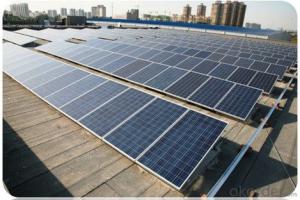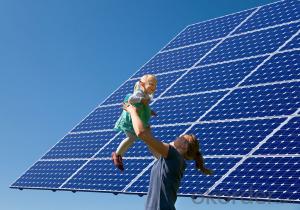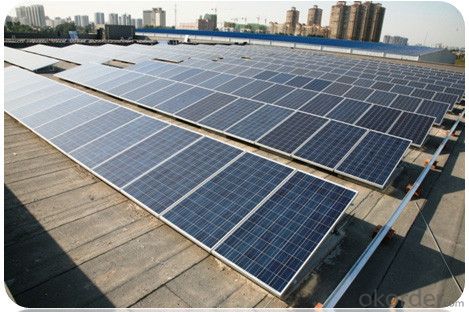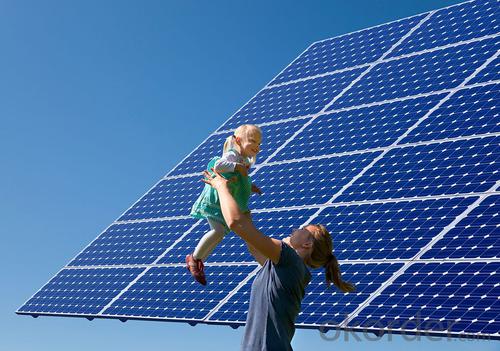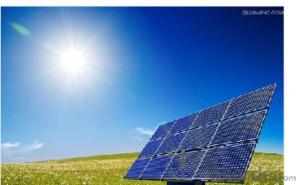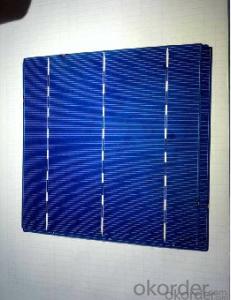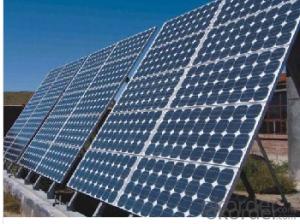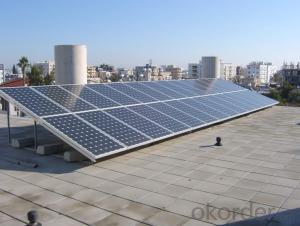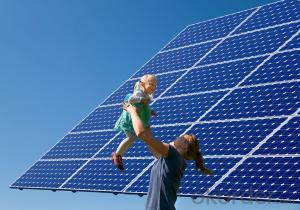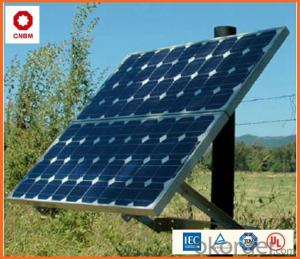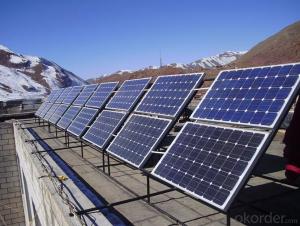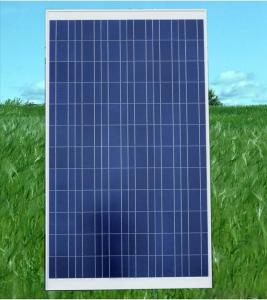Eufy Camera Compatible 255W Silicon Polycrystalline Solar Panels
- Loading Port:
- Guangzhou
- Payment Terms:
- TT OR LC
- Min Order Qty:
- 200000 watt
- Supply Capability:
- 20000000 watt/month
OKorder Service Pledge
OKorder Financial Service
You Might Also Like
INTRODUCTION
We are a high-tech group wich specializes in solar products design,research, manufacture, sales,solar projects design and installation.
Our present annual capacity is 6 million for wafer, 60MWp for solar cells,200MWp for solar modules and one hundred thousand for solar applications. It is expected that the annual capacity of 2012 will be up to 30 million for wafer, 300MWp for solar cells, 1000MW for solar modules and 2 million for solar applications.
This installation Manual contains essential information for the electrical and mechanical installation that your must know before installing CUSTOMER PV modules. This also contains safety information you need to be familiar with .All the information described in this manual are the intellectual property of CNBM and based on the technologies and experiences that have been acquired and accumulated in the long history of CUSTOMER. This document does not constitute a warranty, expressed or implied.
Solar cell module production process
Line called packaging line components, packaging is the production of solar cells a key step in the packaging process without a good, multi-well battery is also not a good component of production boards. Battery package not only the battery life is guaranteed, but also to enhance the combat strength of the battery. Product quality and high service life is to win can be the key to customer satisfaction, so the quality of components of the package board is very important.
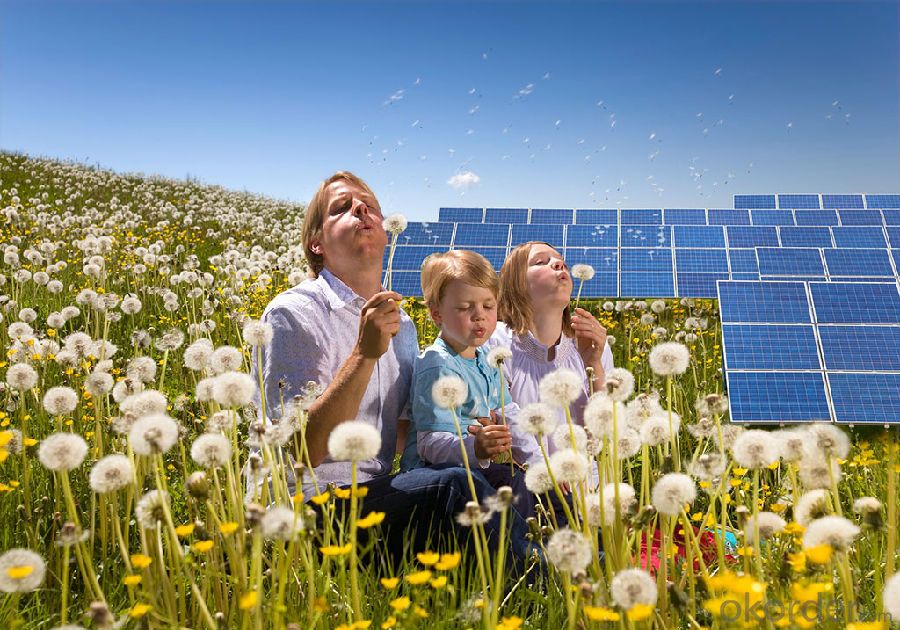
DATA SHEET
Maximum Power | 255W |
Efficiency | 0.157 |
Backsheet | White |
Frame Colar | Silver |
Manufacture Site | China |
Frame | Anodized Aluminum Alloy |
Weight | 19 kg |
FAQ:
Q1: Why buy Materials & Equipment from OKorder.com?
A: All products offered byOKorder.com are carefully selected from China's most reliable manufacturing enterprises. Through its ISO certifications, OKorder.com adheres to the highest standards and a commitment to supply chain safety and customer satisfaction.
Q2: What is a solar PV module?
A: A solar PV module consists of many solar cells that are connected together (typically in series) and packaged in a frame (typically made of aluminum).
Q3: What are the advantages and disadvantages of monocrystalline solar PV modules?
A: Monocrystalline solar PV modules are the most efficient type of solar PV modules, with the exception of CdTe thin film solar PV modules. As a result, monocrystalline solar PV modules are more expensive when compared to almost all other types of solar PV modules.
- Q: How will i construct solar panel?
- For powering a something that works on DC, like a gate opener, Elaine is right, and in some cases only ONE bigger cell is sufficient due to battery storage; however if the appliance is 20v AC, then an inverter is needed also. MOST of Elaine's answer is good, but a few corrections are needed: Plywood - use EXTERIOR grade only, and even then it can warp; chipboard or waferboard is preferable as it does NOT warp, BUT is not available most places in 3/8, /2 nominal, (5/32) is usually the thinnest available, and it is heavier than plywood. DO NOT use particle board. Superglue - NO, it dries too fast to be useful, in most cases. Wires - For a single cell OK, but for larger panels the best wire is tabbing wire, (which is flat,) which is available from all commercial solar cell dealers. Be very careful soldering this to the cells, as unless you buy the expensive flexible cells, they are easily damaged; I suggest also getting flux pens with liquid flux. Diode - Necessary, but needs to be large enough to handle voltage and current. Usually 25v and 5-30 amps,, one per panel. Plexiglas - OK, but NOT as long lasting as glass; best glass is the special solar glass which is designed to pass almost all of the proper light frequencies, but IS expensive, and usually needs to be specially ordered since most glass stores do not stock it. Double panes work well with the outer pane glass and the inner plexiglas, (to protect the cell if glass broken,) IF where might get damage, such as 'ground' mounting. AND Frame kits are available for larger panels, but IF you make your own, a good table router is a great advantage. Inverter - IF used for 20v AC appliances you MUST have an inverter capable of handling the load, and the best ones are modified sine, or true sine, wave types, and even the best are less than 50% efficient. Note that they will last longer if NOT used at more than 2/3 capacity.
- Q: Can solar panels be installed on walls?
- Yes, solar panels can be installed on walls. Wall-mounted solar panels are known as solar wall systems, and they are a viable option for generating electricity from the sun. These panels are typically installed vertically on the sides of buildings or other structures, allowing for efficient use of space.
- Q: How do solar panels impact the electric bill?
- Solar panels can significantly reduce or even eliminate the electric bill for homeowners. By generating clean and sustainable energy from sunlight, solar panels can offset the amount of electricity needed from the grid. Excess energy produced by solar panels can be fed back into the grid, earning credits or monetary compensation through net metering. Ultimately, solar panels can lead to substantial savings on the electric bill over time.
- Q: Can solar panels be used in areas with high levels of seismic vibrations?
- Yes, solar panels can be used in areas with high levels of seismic vibrations. However, it is crucial to ensure that the solar panel installations are engineered and constructed to withstand the potential impact of seismic activity. Proper structural design, adequate mounting systems, and appropriate anchoring techniques can help mitigate the risks associated with earthquakes or other seismic events. Additionally, regular inspections and maintenance can help identify and address any damages caused by seismic vibrations to ensure the continued functionality of the solar panels.
- Q: What is the impact of shading on solar panels' performance?
- Shading has a significant negative impact on the performance of solar panels. When even a small portion of a solar panel is shaded, it can drastically reduce the overall power output of the entire panel. Shading causes a decrease in the amount of sunlight reaching the solar cells, which in turn reduces the energy production. It can also lead to hotspots and potential damage to the shaded cells. Therefore, shading should be minimized as much as possible to ensure optimal performance and efficiency of solar panels.
- Q: I've been thinking and I'd like to have solar panels installed on my roof at some point to help reduce our electricity consumption- but I live in IL and in the winter it frequently snows. Is there such a thing as heated solar panels so they don't get coated w/ice or snow? Are solar panels even a feasible option in IL? Thank you, Anna
- Yes solar panels are a good way to save money. I know a friend of mine she has 2 solar panel she lives in IL.I i know she told me that this year she saved 500$ in electricity bills. Good luck!
- Q: I know that the Solar panels store the power from the sun in the daytime, where does that stored energy go from there? Is it stored in the batteries? And how would you keep the batteries topped up if you had no Electric? by a generator? interested in solar panels for abroad, but need more info.
- Solar panels do not store power. Solar panels convert sunlight into electricity. To store power you need batteries. The usual type of batteries used are lead-acid deep discharge( similar to car batteries). The batteries are charged up during the time the sun is out. However, as a backup you could also have a generator handy to provide power for times when the sun did not shine enough to keep the batteries charged up.
- Q: I'm going to this camp and the instructors asked us to be prepared tomorrow to build a sun tracker for a solar panel. Does any one have any ideas, tips, or advice?
- Since the sun moves in the sky on a very predicatable course you don't need a closed loop control system to track it. All you need is a clock-drive motor and the proper gearing for your latitude. The clock drive motor will move at a constant rotational velocity based on time, and when it is geared down properly the angle of the shaft will follow the sun. Make sure the clock motor is powerful enough to move the solar panel, etc. That's a start, anyway. .
- Q: Hello everybody, the area we are living has energy crises with no electricity available most of the time. What I am thinking is to buy a solar panel with other required accessories. Please note we have normally long sunny days most of the time during a year.Please advice installing solar energy system would supply energy 24/7? I have a television, a dvd player, a fan, 4 energy saver lights (2 watt each) and a laptop. Please also advice the specifications for the system to be installed and the points I need to ensure at the time of purchase. I think of buying a solid battery (not acidic battery)The forum is open for your kind suggestions.Thanks!
- I okorder /
- Q: I have heard a lot about solar panels and I want to know how these solar panels works and is it really possible to generate electricity using solar panels. And what is the cost of getting a solar panel installed?
- They consist of a semiconductor junction which has an uneven distribution of charge so it has an electric field in it. When light hits the material, an electron is knocked off from its parent atom and can move around the material. The electric field pushes it in one direction, et voila. You have current! (it's most complicated than that, but it needs quantum physics to understand). In summary, light goes in and DC electricity comes out of the panel. To use it in your house you will need an inverter as well, which turns it into useful AC. Then you need a way of using up the extra electricity you produce when it's sunny but you're not using power Some people use batteries, most people use 'grid tied' systems, plug in to the national grid and sell electricity to power companies that you're not using! Unfortunately, without major subsidies (like those offered in Germany, Japan and soon the UK), solar panels aren't likely to be cost effective. In the UK it costs about ?5-6,000 to install a kWp of solar power and it will make about ?90 of electricity a year. In California it's sunnier, so would make about ?200 of electricity a year, but it's still very VERY expensive without subsidy. On the plus side, technology is improving. Thin film technology can be done at half the price, so I'd say hold on until thin film solar cells go up for sale (right now they only sell them to companies for big projects). Prices should drop by at least half in the coming years if they can make enough to sell to households - and at that price it'll be worth it in places like California.
Send your message to us
Eufy Camera Compatible 255W Silicon Polycrystalline Solar Panels
- Loading Port:
- Guangzhou
- Payment Terms:
- TT OR LC
- Min Order Qty:
- 200000 watt
- Supply Capability:
- 20000000 watt/month
OKorder Service Pledge
OKorder Financial Service
Similar products
Hot products
Hot Searches
Related keywords
